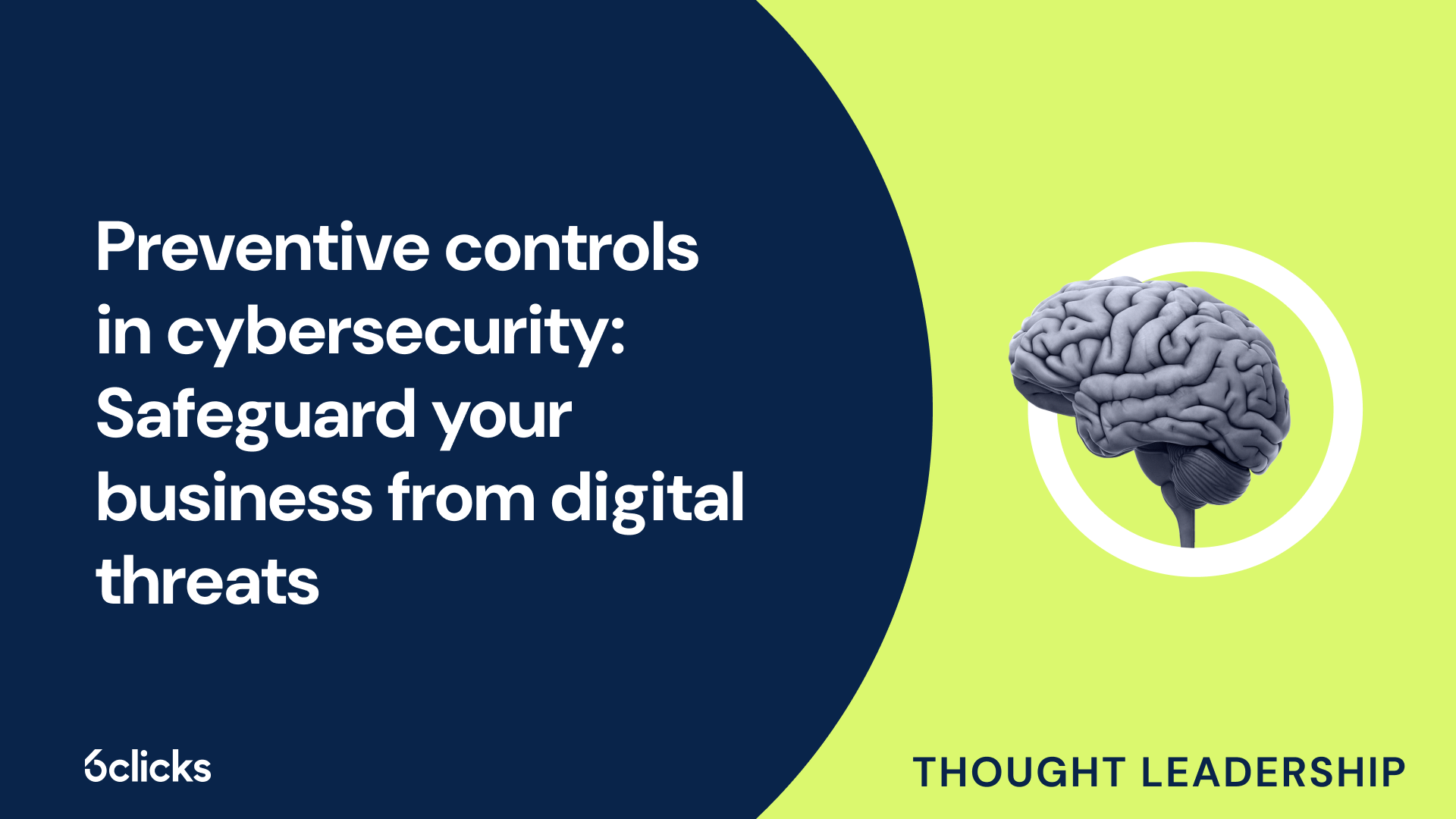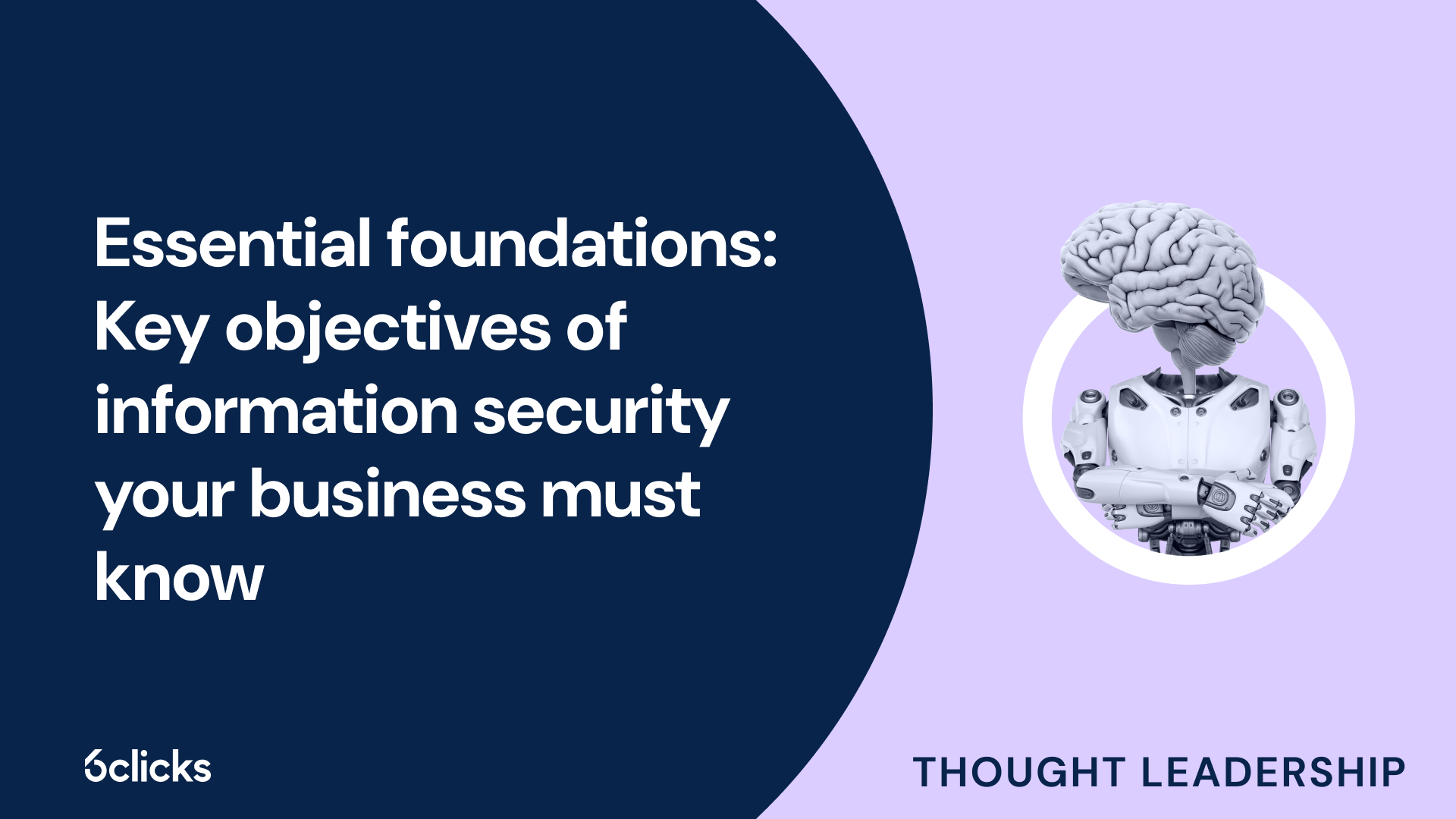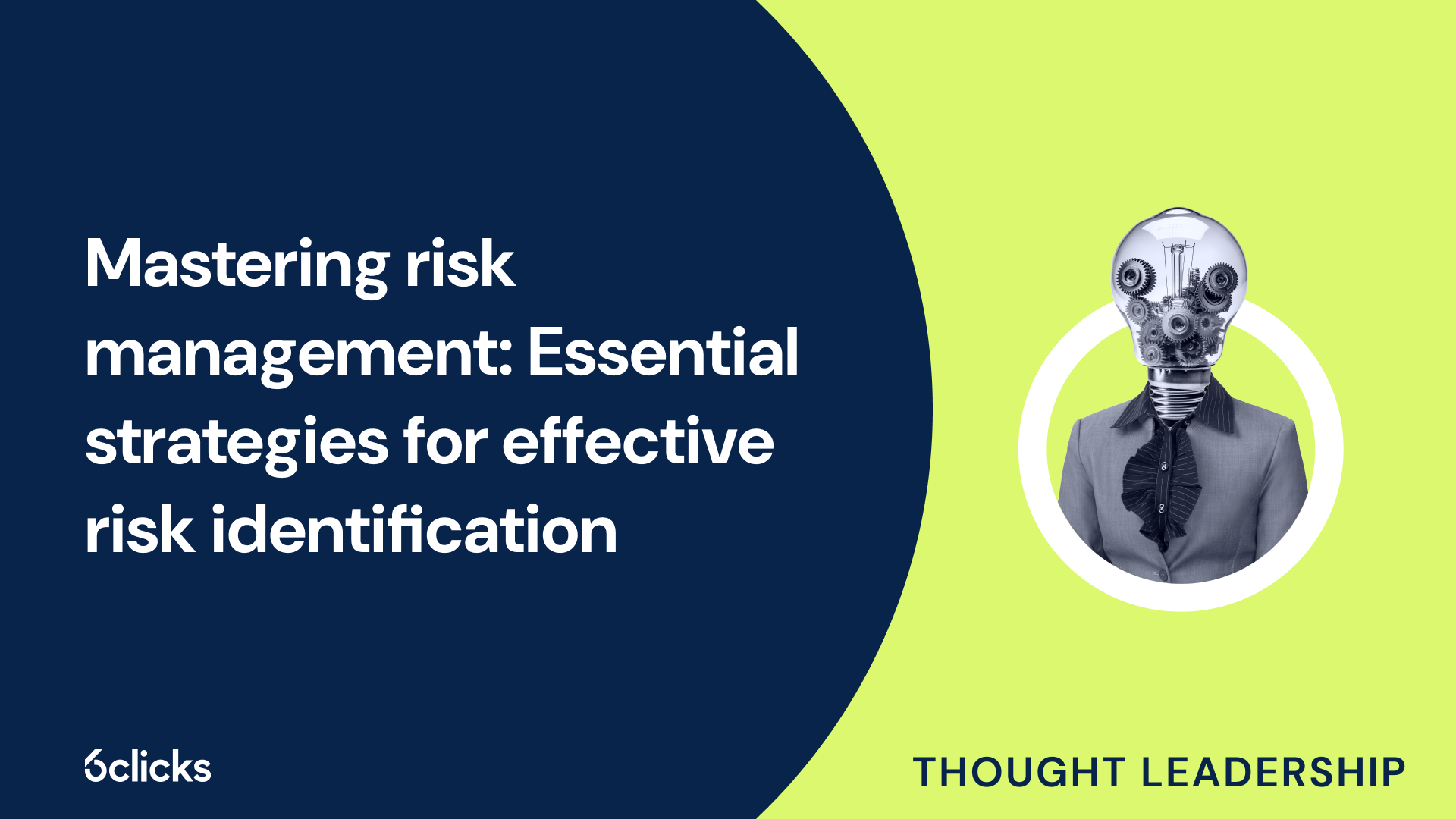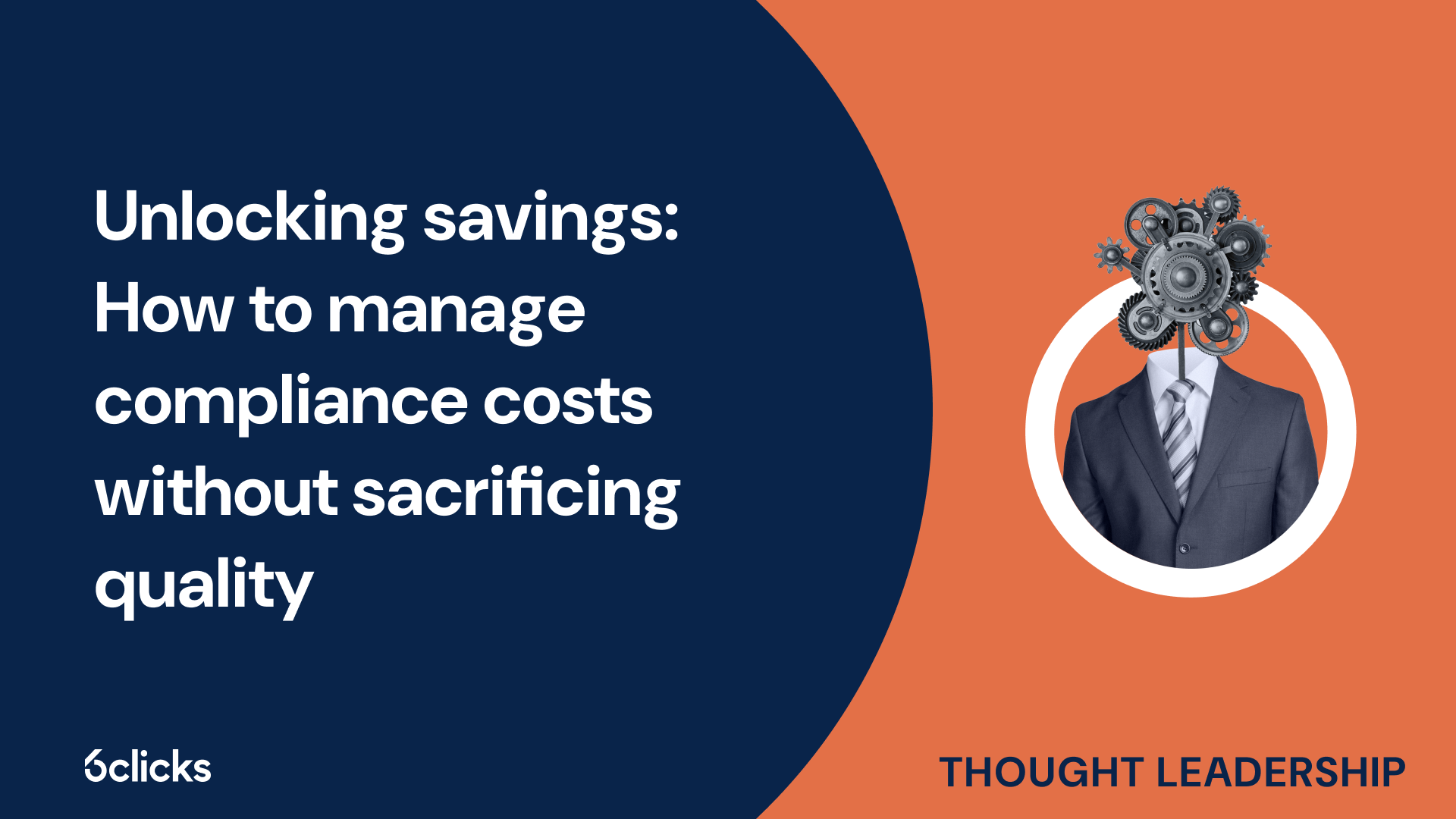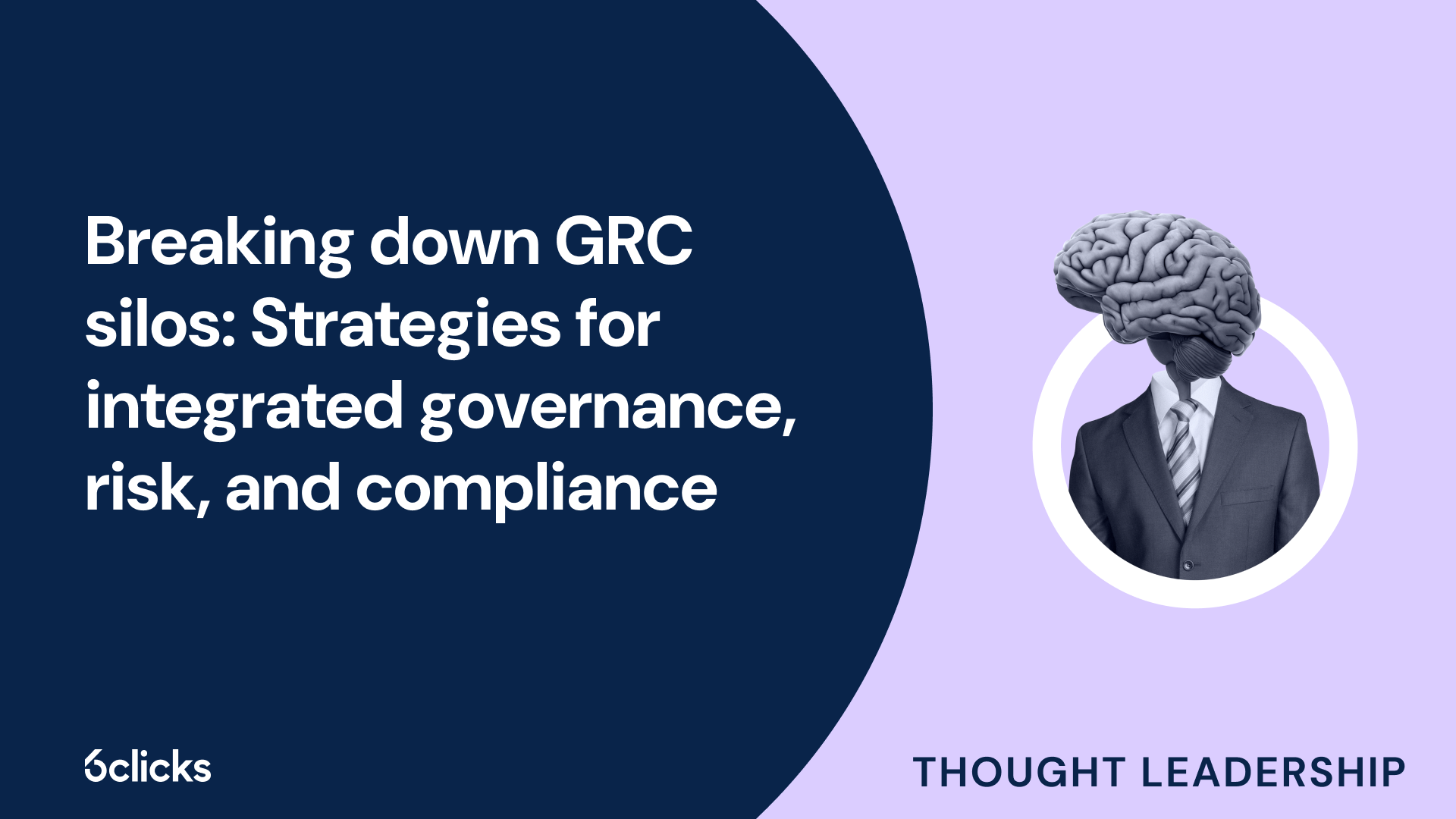The GRC buyer’s guide for 2025: Building resilience with AI-powered, federated solutions
Discover the ultimate GRC buyer's guide for 2025! Uncover how AI-powered, federated solutions transform compliance and security management for industries like government, aerospace, banking, and more. Learn about centralized control, continuous compliance, and advanced cyber GRC capabilities. Download now!
-1.png?width=200&height=249&name=Group%20193%20(1)-1.png)
The GRC buyer’s guide for 2025: Building resilience with AI-powered, federated solutions
What are the 5 basic security principles?
In today’s digital world, cyber threats and security breaches are more common than ever. Protecting against unauthorized access and data breaches is essential for both individuals and organizations. Following basic security principles can build a strong foundation to keep sensitive information safe.
This article will explain the five key security principles that help create effective security programs. Understanding and applying these concepts can reduce risks and protect your systems and information from potential threats.
Get your free copy of the 6clicks Security Compliance Expert Guide.
Principle 1: Confidentiality
Confidentiality ensures that sensitive information is not disclosed to unauthorized individuals, entities, or processes. This principle is about restricting data access to those permitted to see it.
Challenges in achieving confidentiality
- Insider threats: Employees or insiders with access to sensitive data might misuse it.
- Phishing attacks: Cybercriminals use deceptive emails or messages to trick users into revealing confidential information.
- Weak access controls: Poorly managed passwords, shared accounts, or lack of role-based access can lead to unauthorized data access.
- Data transmission vulnerabilities: Unsecured networks or lack of encryption during data transfer can result in data interception.
- Third-party risks: Vendors or contractors with inadequate security measures can expose confidential information.
Solutions to ensure confidentiality
- Access control mechanisms
- Implement role-based access control (RBAC) to restrict data access based on job roles.
- Use multi-factor authentication (MFA) to strengthen identity verification. - Data encryption
- Encrypt sensitive data both in transit and at rest to protect it from unauthorized access.
- Use protocols like HTTPS, SFTP, or VPNs for secure communication. - Regular training and awareness
- Educate employees about phishing attacks and safe data handling practices.
- Conduct simulated phishing exercises to test and improve awareness. - Monitoring and auditing
- Use logging tools to track access and modifications to sensitive data.
- Conduct regular audits to identify and address vulnerabilities. - Vendor and third-party management
- Perform security assessments on vendors handling sensitive information.
- Include confidentiality requirements in contracts and enforce compliance. - Data masking and anonymization
- Replace sensitive data with fictional but realistic values for non-essential use cases (e.g., testing).
- Anonymize personally identifiable information (PII) to limit exposure.
By addressing these challenges with effective solutions, organizations can better safeguard the confidentiality of their sensitive data.
Principle 2: Integrity
Integrity ensures that data is accurate and trustworthy. It prevents unauthorized changes to information, whether accidental or malicious, so that it remains reliable.
Challenges in achieving integrity
- Unauthorized modifications: Malicious actors may alter data to manipulate outcomes or disrupt operations.
- Human errors: Accidental changes or deletions by employees can compromise data integrity.
- Software bugs and malware: Vulnerabilities in software or malicious code can corrupt or tamper with data.
- Insufficient validation: Lack of checks during data entry or transmission can introduce errors.
- Lack of audit trails: Without logs, it’s difficult to detect when and how data has been altered.
Solutions to ensure integrity
- Use of cryptographic hashing
- Implement hashing algorithms (e.g., SHA-256) to generate unique digital fingerprints for data.
- Verify data integrity by comparing current and original hash values. - Access control and permissions
- Limit editing rights to authorized users only.
- Use least privilege principles to minimize potential misuse. - Implementing error detection and correction
- Use error-checking mechanisms like checksums to detect and correct data corruption during storage or transmission.
- Employ parity checks and cyclic redundancy checks (CRC) for transmitted data. - Regular backups
- Maintain frequent backups to restore original data if it becomes corrupted.
- Store backups securely in multiple locations to reduce risks of total data loss. - Audit trails and monitoring
- Maintain logs to track changes made to data and identify unauthorized modifications.
- Use monitoring tools to detect anomalies in data activity in real time. - Data validation and input sanitization
- Implement strict validation rules to ensure only accurate and legitimate data is entered.
- Sanitize inputs to prevent injection attacks or malformed data entry. - Malware protection
- Deploy antivirus and anti-malware tools to prevent data corruption caused by malicious programs.
- Regularly update software to address known vulnerabilities.
By tackling these challenges with robust solutions, organizations can ensure data integrity, keeping information accurate, reliable, and unaltered.
Discover the 6 steps to build an effective security compliance program.
Principle 3: Availability
Availability ensures that systems, applications, and data are accessible when needed. It minimizes downtime caused by hardware failures, cyberattacks, or other disruptions.
Challenges in achieving availability
- Cyberattacks (e.g., DDoS): Distributed Denial of Service (DDoS) attacks overwhelm systems, making them inaccessible.
- Hardware failures: Malfunctioning or aging hardware can lead to system outages.
- Natural disasters: Floods, earthquakes, or other disasters can physically damage infrastructure.
- Software bugs and glitches: Errors in code or configuration issues can disrupt services.
- Insufficient resources: Systems with limited processing power or storage may fail under high demand.
- Lack of redundancy: Single points of failure can result in prolonged downtime if critical components fail.
Solutions to ensure availability
- DDoS protection
- Use DDoS mitigation tools and services to filter out malicious traffic.
- Implement rate-limiting and traffic-shaping techniques to handle unexpected spikes in traffic. - Redundancy and failover systems
- Use redundant servers, networks, and data centers to ensure continuity if one component fails.
- Deploy failover systems to automatically switch to backup infrastructure in case of outages. - Regular maintenance and upgrades
- Perform routine checks and maintenance on hardware to prevent unexpected failures.
- Update software and firmware to address bugs and vulnerabilities. - Backups and disaster recovery plans
- Maintain regular backups of critical data and systems.
- Develop and test disaster recovery plans to ensure quick restoration of services after an incident. - Load balancing
- Distribute workloads across multiple servers to avoid overloading a single system.
- Use cloud solutions for scalable and on-demand resources. - Monitoring and alert systems
- Deploy real-time monitoring tools to detect system issues early.
- Set up alerts to notify administrators of potential problems before they escalate. - Resilient infrastructure design
- Use geographically distributed data centers to reduce risks from localized disasters.
- Implement fault-tolerant systems that can continue operation even when a component fails.
By addressing these challenges with proactive solutions, organizations can ensure that their systems and services remain operational, reliable, and accessible when needed.
Principle 4: Authentication
Authentication verifies the identity of users, systems, or devices to ensure only authorized entities can access resources. This prevents impersonation or unauthorized access.
Challenges in achieving authentication
- Weak or reused passwords: Users often choose simple or repetitive passwords, making accounts vulnerable to attacks.
- Phishing attacks: Cybercriminals trick users into revealing their credentials through fake websites or emails.
- Credential theft: Hackers may steal usernames and passwords via malware, keyloggers, or data breaches.
- User fatigue: Complex authentication processes can frustrate users, leading to poor adherence to security protocols.
- Insider threats: Employees with access to authentication mechanisms may misuse their privileges.
- Device spoofing: Attackers may impersonate trusted devices to gain access.
Solutions to ensure strong authentication
- Use of Multi-Factor Authentication (MFA)
Combine two or more factors for verification:
- Something you know (e.g., password or PIN)
- Something you have (e.g., smartphone or security token)
- Something you are (e.g., biometrics like fingerprint or facial recognition).
Example: A bank requires both a password and a one-time code sent to the user’s phone for account access. - Password policies and managers
- Enforce strong password policies, such as requiring complexity, minimum length, and regular updates.
- Encourage the use of password managers to generate and store strong, unique passwords securely. - Phishing resistance
- Educate users about recognizing and avoiding phishing scams.
- Use phishing-resistant authentication methods, such as security keys (e.g., FIDO2). - Biometric authentication
- Implement biometrics (e.g., fingerprints, facial recognition) for additional security.
- Ensure biometric data is securely stored and processed locally to avoid exposure. - Behavioral analytics
- Monitor user behavior (e.g., typing patterns, device usage) to detect anomalies that may indicate unauthorized access.
Example: Lock an account if access is attempted from an unusual location or device. - Encrypted credential storage
- Hash and salt passwords before storing them to prevent plaintext credential theft.
- Use secure authentication protocols like OAuth or OpenID for third-party authentication. - Adaptive authentication
- Implement context-aware systems that adjust authentication requirements based on risk factors (e.g., location, device type, or time of access).
Example: Require MFA for logins from untrusted networks but allow single-factor authentication for trusted devices. - Regular security audits
- Conduct periodic audits of authentication systems to identify vulnerabilities and improve processes.
- Test for weak passwords, outdated protocols, or improperly configured systems.
By addressing these challenges with a combination of strong technologies, user education, and proactive measures, organizations can significantly enhance their authentication mechanisms, ensuring secure and reliable access control.
Principle 5: Non-Repudiation
Non-repudiation ensures that individuals or entities involved in a transaction, communication, or action cannot deny their participation. It provides evidence of both the origin and receipt of data, making it possible to hold parties accountable.
Challenges in achieving non-repudiation
- Weak authentication mechanisms: If authentication is not robust, users can deny their involvement in actions or transactions.
- Tampering with data: Without proper safeguards, data could be altered or deleted, making it hard to prove actions.
- Lack of secure logging: Inadequate logging systems may fail to provide reliable evidence for tracking actions.
- Denial of responsibility: Users might claim their credentials were stolen or actions were performed without their consent.
- Scalability issues: Ensuring non-repudiation across a large number of transactions or users can be technically challenging.
- Legal and regulatory gaps: Different jurisdictions may not recognize or enforce digital signatures or logs as valid proof.
Solutions to ensure non-repudiation
- Digital signatures
- Use cryptographic signatures to link actions or transactions directly to specific individuals or systems.
Example: A signed email uses a public/private key system to verify the sender’s identity and prevent denial of sending the message. - Time-stamping
- Securely record the date and time of transactions to provide a verifiable timeline.
Example: Blockchain technology uses immutable time stamps to ensure transactions cannot be altered or disputed. - Robust logging and audit trails
- Maintain detailed and secure logs of all actions, ensuring they cannot be tampered with.
Example: A payment gateway logs every transaction, including user details, timestamps, and IP addresses, for accountability. - Strong authentication systems
- Combine authentication methods such as multi-factor authentication (MFA) to ensure only authorized users perform actions.
Example: A banking app requires a password, fingerprint, and OTP before allowing transactions. - Encryption and integrity checks
- Encrypt sensitive data and use hash functions to detect any alterations.
Example: Email encryption services use PGP (Pretty Good Privacy) to verify message integrity and prevent tampering. - Secure storage of evidence
- Store logs, signatures, and evidence in tamper-proof systems.
Example: A company uses a write-once, read-many (WORM) storage system to archive audit logs securely. - Legal agreements and compliance
- Use enforceable contracts and comply with standards like eIDAS (EU regulations) or UETA (U.S. laws) to ensure legal recognition of digital evidence.
Example: A service provider’s terms of use include clauses about accountability for digitally signed actions. - Incident response mechanisms
- Implement protocols for responding to claims of fraud or unauthorized access.
Example: A system immediately locks an account and investigates when unusual activity is detected.
By addressing these challenges with technical, legal, and procedural solutions, organizations can effectively implement non-repudiation, ensuring accountability and trust in digital systems.
Why are these principles important to understand?
Understanding the five basic security principles—Confidentiality, Integrity, Availability, Authentication, and Non-Repudiation—is essential for several reasons:
- Protecting data: Ensures sensitive information is secure and only accessible to authorized individuals, reducing the risk of breaches.
- Maintaining accuracy: Guarantees data remains accurate and trustworthy, preventing costly errors or fraud.
- Ensuring availability: Keeps systems accessible, minimizing downtime and ensuring business continuity.
- Verifying identity: Confirms users are who they say they are, preventing unauthorized access and cyberattacks.
- Accountability: Provides evidence of actions, protecting against denial of involvement and supporting legal processes.
These principles help mitigate risks, ensure compliance with regulations, build trust, and maintain smooth operations, making them fundamental to effective security strategies.
Summary
The five basic security principles—Confidentiality, Integrity, Availability, Authentication, and Non-Repudiation—are the foundation of effective cybersecurity strategies. These principles help protect sensitive data from unauthorized access, ensure its accuracy and reliability, maintain continuous system availability, verify user identities, and hold individuals accountable for their actions. By understanding and applying these principles, individuals and organizations can reduce the risk of cyber threats, safeguard systems and information, and ensure compliance with legal and regulatory standards. Together, these concepts create a robust framework for building trust, protecting operations, and fostering resilience in today’s digital world.
How 6clicks can help
- Security compliance: Align with in-demand security frameworks such as ISO 27001, NIST CSF, SOC 2, and more.
- Control management: Implement and monitor the performance of security measures like multi-factor authentication, encryption, and other controls.
- Incident management: Proactively capture issues and action incidents before they escalate using customizable workflows and built-in task assignment features.
- Audits and assessments: Verify the effectiveness of security measures by conducting audits and streamline the process using turnkey templates and AI-powered responses.







.png?width=302&height=170&name=eBook%20Title%20-%20Cyber%20Incident%20Response%20(1).png)
.jpg?width=302&height=170&name=eBook%20Title%20-%20Risk%20management%20for%20ISO%2027001%20and%20ISMS%20expert%20guide%20eBook%20(1).jpg)
